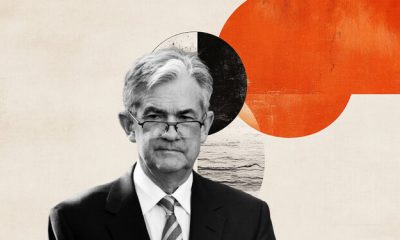

others
US Dollar flat ahead of Powell comments before Fed’s blackout period – Crypto News
- The Greenback trades a touch softer after its firm move up on Thursday.
- US traders are set to hear from US Fed Chairman Powell ahead of the blackout period.
- The US Dollar Index is steady above 103 and just a sigh away from ending the week in the green.
The US Dollar (USD) is on a crossroad where it can either close the week in the green or in the red. The US Dollar Index (DXY) has made a staggering recovery on Thursday and was back at its opening price from Monday. The main driver is the rate differential between the US and the rest of the world. This got a bit bigger again after the recent plunge in US rates. These too recovered this week.
On the economic front, two main elements could still add some US Dollar strength to this week’s move. The first is a speech from US Federal Reserve Chairman Jerome Powell right at the end of this trading day and the second a different set of numbers from the Institute of Supply Management. Should both elements turn out in favour of the Greenback, expect to possibly even see a close above 104 this evening at the US closing bell.
Daily digest: Powell to deliver guidance
- Around 14:45 GMT the day kicks off with the S&P Global Purchase Manufacturing Index (PMI) for Manufacturing. Previous was at 49.4, a stand still is expected.
- Near 15:00 GMT this week’s last batch of data will be released:
- Construstruction Spending for the month is due to come out: Previous was at 0.4% and it is expected to remain unchanged.
- The Institute for Supply Management (ISM) will release its figures with the Employment Index for November: Previous was at 46.8 and forecast is for 47.2.
- ISM Manufacturing New Orders Index is expected to head from 45.5 to 46.7.
- ISM Manufacturing PMI will rise from 46.7 to 47.6.
- ISM Manufacturing Prices Paid is to soar from 45.1 to 46.2.
- Fed speakers this Friday as it is the last moment before the blackout period ahead of the last Fed rate decision for 2023.
- Austan Goolsbee from the Chicago Fed is due to speak nar 15:00 GMT.
- Fed Chairman Jerome Powell is due to speak nar 16:00 GMT.
- Chairman Powell will speak again at 19:00 GMT.
- Lastly Lisa Cook from the Fed’s board of governors will speak as well around 19:00 GMT.
- Right at the end of this Thursday, the US Treasury is heading to markets to allocate a 4-week bill.
- Equities are sliding lower with the Hang Seng having a very bad week this week: again down over 1%. European and US equities are mildly in the green.
- The CME Group’s FedWatch Tool shows that markets are pricing in a 99.4% chance that the Federal Reserve will keep interest rates unchanged at its meeting in December.
- The benchmark 10-year US Treasury Note trades at 4.31%, and steady off this week’s low.
US Dollar Index technical analysis: Where to go from here
The US Dollar is holding good cards here to take the upper hand this week and end its losing streak. US Fed Chairman Jerome Powell will need to choose if he backs the dovish comments from Fed’s Governor Christopher Waller, or sticks with the steady-for-longer view from San Francisco Fed’s Mary Daly. The latter could be enough to shoot the US Dollar Index (DXY) back above 104.
The DXY is making its way up towards the 200-day Simple Moving Average (SMA), which is near 103.58. The DXY could still make it through there, should Powell comments be enough for another push higher. A two-tiered pattern of a daily close lower followed by an opening higher would quickly see the DXY back above 104.28, with the 200-day and 100-day SMA turned over to support levels.
To the downside, historic levels from August are coming into play, when the Greenback summer rally took place. The lows of June make sense to look for some support, near 101.92, just below 102. Should more events take place that initiate further declines in US rates, expect to see a near full unwind of the 2023 summer rally, heading to 100.82, followed by 100.00 and 99.41.
Risk sentiment FAQs
In the world of financial jargon the two widely used terms “risk-on” and “risk off” refer to the level of risk that investors are willing to stomach during the period referenced. In a “risk-on” market, investors are optimistic about the future and more willing to buy risky assets. In a “risk-off” market investors start to ‘play it safe’ because they are worried about the future, and therefore buy less risky assets that are more certain of bringing a return, even if it is relatively modest.
Typically, during periods of “risk-on”, stock markets will rise, most commodities – except Gold – will also gain in value, since they benefit from a positive growth outlook. The currencies of nations that are heavy commodity exporters strengthen because of increased demand, and Cryptocurrencies rise. In a “risk-off” market, Bonds go up – especially major government Bonds – Gold shines, and safe-haven currencies such as the Japanese Yen, Swiss Franc and US Dollar all benefit.
The Australian Dollar (AUD), the Canadian Dollar (CAD), the New Zealand Dollar (NZD) and minor FX like the Ruble (RUB) and the South African Rand (ZAR), all tend to rise in markets that are “risk-on”. This is because the economies of these currencies are heavily reliant on commodity exports for growth, and commodities tend to rise in price during risk-on periods. This is because investors foresee greater demand for raw materials in the future due to heightened economic activity.
The major currencies that tend to rise during periods of “risk-off” are the US Dollar (USD), the Japanese Yen (JPY) and the Swiss Franc (CHF). The US Dollar, because it is the world’s reserve currency, and because in times of crisis investors buy US government debt, which is seen as safe because the largest economy in the world is unlikely to default. The Yen, from increased demand for Japanese government bonds, because a high proportion are held by domestic investors who are unlikely to dump them – even in a crisis. The Swiss Franc, because strict Swiss banking laws offer investors enhanced capital protection.
-
others1 week ago
Will Ethereum Price Rally to $3,200 as Wall Street Pivots from BTC to ETH – Crypto News
-
![DIS Elliott Wave technical analysis [Video]](https://dripp.zone/news/wp-content/uploads/2025/06/DIS-Elliott-Wave-technical-analysis-Video-Crypto-News-400x240.jpg)
![DIS Elliott Wave technical analysis [Video]](https://dripp.zone/news/wp-content/uploads/2025/06/DIS-Elliott-Wave-technical-analysis-Video-Crypto-News-80x80.jpg) others6 days ago
others6 days agoSkies are clearing for Delta as stock soars 13% on earnings beat – Crypto News
-
![DIS Elliott Wave technical analysis [Video]](https://dripp.zone/news/wp-content/uploads/2025/06/DIS-Elliott-Wave-technical-analysis-Video-Crypto-News-400x240.jpg)
![DIS Elliott Wave technical analysis [Video]](https://dripp.zone/news/wp-content/uploads/2025/06/DIS-Elliott-Wave-technical-analysis-Video-Crypto-News-80x80.jpg) others6 days ago
others6 days agoSkies are clearing for Delta as stock soars 13% on earnings beat – Crypto News
-
Cryptocurrency1 week ago
TON Foundation Confirms UAE Golden Visa Offer Is Not Official – Crypto News
-

 Blockchain1 week ago
Blockchain1 week agoInsomnia Labs Debuts Stablecoin Credit Platform for Creators – Crypto News
-

 Cryptocurrency1 week ago
Cryptocurrency1 week agoCoinbase hacker returns with $12.5 mln ETH buy: Will security concerns affect Ethereum? – Crypto News
-

 others1 week ago
others1 week agoAppropriate to have cautious gradual stance on easing – Crypto News
-

 Cryptocurrency1 week ago
Cryptocurrency1 week agoTornado Cash Judge Won’t Let One Case Be Mentioned in Roman Storm’s Trial: Here’s Why – Crypto News
-
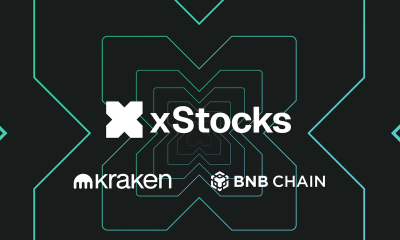
 Blockchain1 week ago
Blockchain1 week agoKraken and Backed Expand Tokenized Equities to BNB Chain – Crypto News
-
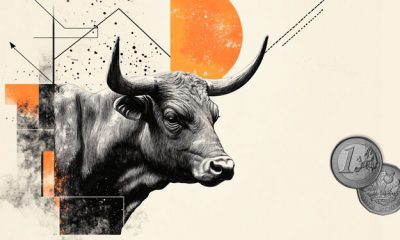
 others1 week ago
others1 week agoEUR/GBP posts modest gain above 0.8600 ahead of German inflation data – Crypto News
-

 Blockchain7 days ago
Blockchain7 days agoAnt Group Eyes USDC Integration Circle’s: Report – Crypto News
-

 Cryptocurrency6 days ago
Cryptocurrency6 days agoBitcoin Breaks New Record at $111K, What’s Fueling the $120K Price Target? – Crypto News
-
Technology6 days ago
XRP Eyes $3 Breakout Amid Rising BlackRock ETF Speculation – Crypto News
-
others1 week ago
Is a Pi Network Crash Ahead As 272M Coins Unlock in July – Crypto News
-
Business1 week ago
Solana ETF Launch Delayed Amid Wait for SEC’s Crypto ETF Framework – Crypto News
-

 others1 week ago
others1 week agoUSD/CHF gains ground below 0.8000 ahead of US tariff deadline – Crypto News
-

 Blockchain1 week ago
Blockchain1 week agoEU Questions Robinhood About OpenAI and SpaceX Stock Tokens – Crypto News
-

 Cryptocurrency1 week ago
Cryptocurrency1 week agoOn thinking ahead when markets get murky – Crypto News
-
Technology1 week ago
Solana Meme Coin PNUT Rallies 10% Amid Elon Musk’s Statement – Crypto News
-
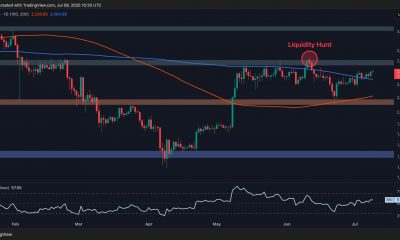
 Cryptocurrency1 week ago
Cryptocurrency1 week agoIs ETH Finally Ready to Shoot For $3K? (Ethereum Price Analysis) – Crypto News
-

 Blockchain1 week ago
Blockchain1 week agoXRP Rally Possible If Senate Web3 Crypto Summit Goes Well – Crypto News
-

 others1 week ago
others1 week agoUSD/CAD trades with positive bias below 1.3700; looks to FOMC minutes for fresh impetus – Crypto News
-

 Blockchain1 week ago
Blockchain1 week agoEthereum Bulls Roar — $3K Beckons After 5% Spike – Crypto News
-
Technology1 week ago
VC Firm Ego Death Capital Closes $100M Funding to Back Bitcoin-Based Projects – Crypto News
-

 others1 week ago
others1 week agoNovaEx Launches with a Security-First Crypto Trading Platform Offering Deep Liquidity and Institutional-Grade Infrastructure – Crypto News
-
Business1 week ago
Did Ripple Really Win XRP Lawsuit Despite $125M Fine? Lawyer Fires Back at CEO – Crypto News
-

 Cryptocurrency7 days ago
Cryptocurrency7 days agoXRP price forecast as coins surges 2.19% to $2.33 – Crypto News
-

 others7 days ago
others7 days agoAnthony Scaramucci Says $180,000 Bitcoin Price Explosion Possible As BTC ‘Supremacy’ Creeps Up – Here’s His Timeline – Crypto News
-

 Blockchain6 days ago
Blockchain6 days agoSUI Chart Pattern Confirmation Sets $3.89 Price Target – Crypto News
-

 others6 days ago
others6 days agoEUR/GBP climbs as weak UK data fuels BoE rate cut speculation – Crypto News
-

 Blockchain5 days ago
Blockchain5 days agoBitcoin Hits All-Time High as Crypto Legislation Votes Near – Crypto News
-
Business5 days ago
PENGU Rallies Over 20% Amid Coinbase’s Pudgy Penguins PFP Frenzy – Crypto News
-

 Blockchain1 week ago
Blockchain1 week agoUAE Golden Visa Is ‘Being Developed Independently‘ — TON Foundation – Crypto News
-
others1 week ago
Nasdaq-Listed Bit Digital Converts Entire Bitcoin Holdings To Ethereum Treasury – Crypto News
-

 others1 week ago
others1 week agoEthereum Continues Outperforming Institutional Capital Flows As Investors Pour $1,040,000,000 Into Crypto Products: CoinShares – Crypto News
-

 Cryptocurrency1 week ago
Cryptocurrency1 week agoElon Musk announces his ‘America Party’ will embrace Bitcoin, criticizes Trump’s fiscal bill – Crypto News
-

 Technology1 week ago
Technology1 week agoHuaweis AI lab denies that one of its Pangu models copied Alibabas Qwen – Crypto News
-

 Cryptocurrency1 week ago
Cryptocurrency1 week agoXRP could rally higher on steady capital inflow; check forecast – Crypto News
-

 Blockchain1 week ago
Blockchain1 week agoVitalik Buterin Backs Copyleft Licensing for Fairer Crypto – Crypto News
-
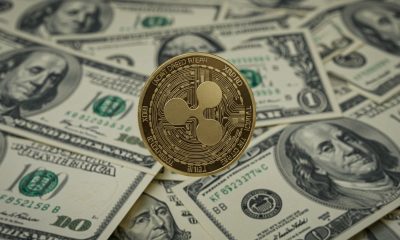
 Cryptocurrency1 week ago
Cryptocurrency1 week agoBulls In Control But Resistance Persists at $2.30. What Next? – Crypto News
-
Technology1 week ago
GameSquare Stock Shoots 58% After Revealing $100 Million Ethereum Treasury Strategy – Crypto News
-

 others1 week ago
others1 week agoAustralian Dollar remains stronger due to persistent inflation risks, FOMC Minutes eyed – Crypto News
-
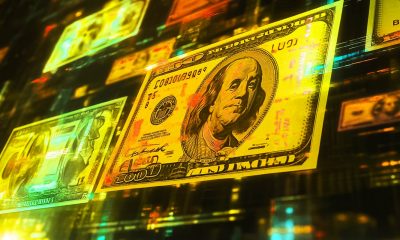
 others1 week ago
others1 week agoUS Dollar Resurgence May Be Around the Corner, According to Barclays Currency Strategist – Here’s Why: Report – Crypto News
-
others1 week ago
Trump Jr. Backed Thumzup Media To Invest In ETH, XRP, SOL, DOGE And LTC – Crypto News
-
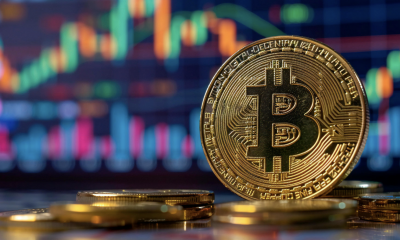
 Cryptocurrency1 week ago
Cryptocurrency1 week agoBitcoin Hits Record Peak. How High Can It Surge in 2025? – Crypto News
-

 Blockchain1 week ago
Blockchain1 week agoBinance Founder Backs BNB Treasury Company Aiming For US IPO – Crypto News
-
Cryptocurrency1 week ago
Tokenized Securities Are Still Securities, US SEC Warns Robinhood, Kraken – Crypto News
-

 Technology1 week ago
Technology1 week ago10 Smartchoice tablets from top brands, curated for everyday use, up to 45% off before Amazon Prime Day Sale – Crypto News
-

 Blockchain1 week ago
Blockchain1 week agoAustralia Banks Join Digital Currency Trial for Tokenized Assets – Crypto News
-
others1 week ago
China’s Ant Group With 1.4B Users Taps Circle to Integrate USDC – Crypto News











